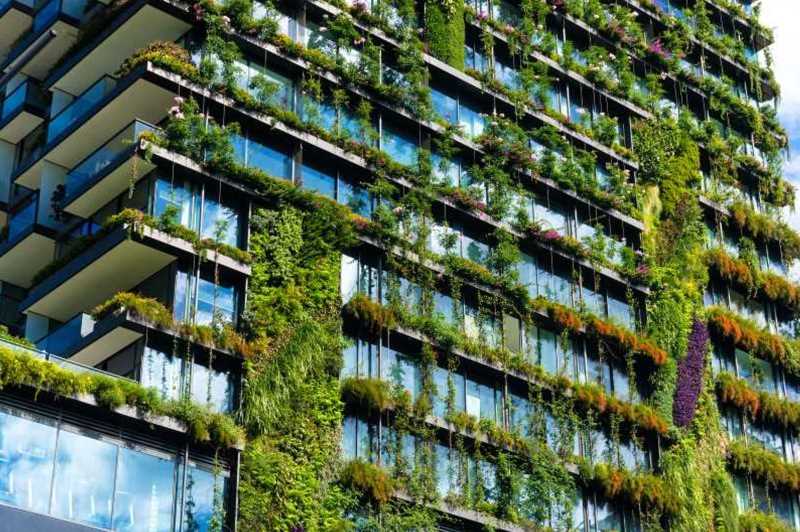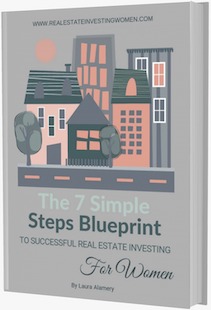Eco-friendly investments are changing the game in real estate. Traditional properties often harm the environment, while green real estate offers a sustainable alternative as sustainability intensifies for the investor in retirement planning to act. Investors can capitalize on this growing trend by choosing eco-friendly options that not only benefit the planet but also yield impressive returns.
Green buildings reduce energy costs and attract environmentally conscious tenants. They enhance property value and provide tax incentives. The shift towards sustainability is not just a trend; it’s a necessity for future growth. By investing in eco-friendly real estate, you’re making a smart financial move and contributing to a healthier planet. Dive into this guide to act and discover how to make eco-friendly investments work for you.
Key Takeaways
-
Explore Green Real Estate: Research and understand the principles of green real estate to make informed investment decisions that align with sustainability goals.
-
Recognize the Importance: Acknowledge that eco-friendly investments are not just trends; they contribute to a healthier planet and can enhance your portfolio’s value.
-
Leverage Benefits: Take advantage of the numerous benefits of sustainable properties, such as lower operational costs and increased tenant demand, which can lead to higher returns.
-
Stay Updated on Market Trends: Monitor current market trends and demand for eco-friendly properties to identify promising investment opportunities.
-
Utilize Financial Incentives: Investigate available financial incentives, such as grants or subsidies, that can help offset initial investment costs in green real estate.
-
Build a Diverse Portfolio: Create a well-rounded green investment portfolio by including various types of sustainable properties to manage risk effectively.
Understanding Green Real Estate
Definition
Green real estate refers to properties designed to minimize environmental impact. These properties use sustainable practices throughout their lifecycle. From construction to operation, every step aims to reduce waste and energy consumption.
Key Features
Key features of green buildings include energy efficiency and water conservation. Energy-efficient systems, like solar panels and LED lighting, lower utility costs. Water-saving fixtures help reduce water usage significantly.
Sustainable materials are another important aspect. Builders often use recycled or locally sourced materials. This not only reduces the carbon footprint but also supports local economies.
Certifications
Certifications play a crucial role in validating eco-friendly real estate. The LEED (Leadership in Energy and Environmental Design) certification is one of the most recognized. It sets standards for environmentally friendly construction and design.
LEED evaluates buildings based on various criteria. These include energy savings, water efficiency, and indoor environmental quality. Properties that meet these standards receive a certification level ranging from Certified to Platinum.
Investors often look for these certifications when considering real estate projects. A LEED-certified property can attract higher rents and lower vacancy rates. This makes it a smart choice for investors focused on long-term gains.
Global Trends
The demand for green real estate is growing worldwide. Many countries have implemented regulations promoting sustainable building practices. For example, in 2020, over 200 cities in the U.S. committed to reducing greenhouse gas emissions through green building initiatives.
This trend reflects a broader movement toward eco-friendly investments. Investors are increasingly aware of the benefits of sustainable properties. They recognize that green buildings often have better resale value and lower operating costs.
Financial Benefits
Investing in green real estate can lead to financial advantages. Energy-efficient buildings often qualify for tax incentives and rebates. These financial benefits can offset initial investment costs.
Green properties tend to have lower maintenance costs over time. Sustainable designs use durable materials that require less frequent replacement. This leads to significant savings for owners in the long run.
Importance of Eco-Friendly Investments
Consumer Demand
Growing consumer demand for sustainable living options shapes investment strategies. Many people today prefer homes and buildings that reflect environmental values. They seek properties that use renewable energy, promote energy efficiency, and follow sustainability initiatives. This shift in preferences influences developers and investors alike. They recognize the need to adapt to changing market demands.
Investors now consider the ecological footprint of their properties. They understand that eco-friendly investments can attract more buyers and tenants. This trend leads to a rise in property values in areas focused on sustainability. The market rewards those who prioritize environmental responsibility.
Climate Change Efforts
Eco-friendly investments align closely with global efforts to combat climate change. Initiatives like the Paris Agreement set goals for reducing greenhouse gas emissions. These goals encourage countries to adopt better environmental policies. Investors are responding by funding projects that support these aims.
Sustainable investing helps reduce the overall climate impact of real estate. Properties designed with energy-efficient systems lower carbon emissions significantly. Features like solar panels and green roofs contribute to this reduction. As a result, eco-friendly buildings become essential in addressing climate challenges.
Long-Term Stability
Investments focusing on environmental stewardship offer potential for long-term financial stability. Research indicates that properties with sustainable features often outperform traditional ones financially. Investors benefit from lower operating costs due to energy efficiency.
Green buildings also attract higher occupancy rates, leading to increased rental income. Properties that prioritize environmental health tend to have lower vacancy rates. This stability makes them attractive in both good and bad economic times.
Moreover, eco-friendly investments appeal to socially responsible investors. They want their money to support businesses aligned with their values. Investing in green real estate meets this desire while also contributing positively to society.
Environmental Impact
The environmental impact of real estate plays a crucial role in investment decisions today. Investors are increasingly aware of how properties affect the planet. They look for developments that minimize harm and enhance local ecosystems.
Projects that incorporate natural landscapes or preserve green spaces demonstrate an environmental focus. These projects show respect for nature while providing community benefits. Such considerations lead to a more sustainable future for all.
Benefits of Sustainable Property
Lower Operating Costs
Sustainable properties lead to lower operating costs. Energy-efficient designs save on utility bills. For example, buildings with solar panels or energy-efficient appliances reduce electricity usage. This results in significant savings over time.
Water conservation systems also contribute to cost reduction. Rainwater harvesting and low-flow fixtures minimize water waste. These sustainable practices lower expenses while promoting a sustainable environment.
Market Appeal
Eco-friendly properties attract tenants and buyers. Many people prefer living in sustainable environments. Properties that feature sustainable design often have higher occupancy rates. Tenants appreciate the benefits of sustainable living spaces.
Green certifications, like LEED, enhance marketability. These certifications signal commitment to sustainability initiatives. Buyers are willing to pay more for homes that align with their values.
Increased Property Values
Investing in sustainable development can increase property values. As eco-friendliness gains importance, demand rises for green real estate. Properties with sustainability measures often see appreciation over time.
Research indicates that homes with energy-efficient features sell for more than traditional homes. The appeal of a sustainable future drives this trend. Investors recognize the potential for profit in eco-friendly investments.
Corporate Sustainability Goals
Many companies adopt corporate sustainability goals. They seek to reduce their carbon footprint and promote environmental sustainability. Businesses prefer leasing space in green buildings. This choice reflects their commitment to sustainability principles.
Companies benefit from lower operational costs in sustainable properties. They also enhance their brand image by aligning with eco-friendly practices. This approach attracts environmentally conscious consumers.
Sustainability Strategies
Implementing sustainability strategies leads to long-term benefits. For instance, using renewable materials in construction reduces environmental impact. Incorporating smart technology optimizes energy use in buildings.
These strategies create a cycle of sustainable progress. As more properties embrace these measures, the market shifts towards greener options. This shift benefits both investors and the environment.
Market Trends and Demand
Current Trends
Investors now focus on eco-friendly investments. The market shows a clear shift towards sustainable real estate. Many developers are incorporating green building practices. This change is driven by the need to address climate change. More properties now feature renewable energy sources and sustainable materials.
The demand for eco-friendly properties is rising. Research indicates that these properties often have higher value. They attract buyers who prioritize sustainability. Many investors recognize this trend as an opportunity for growth.
Demographic Shifts
Millennials are leading the charge for green living. This generation values sustainability more than previous ones. They seek homes that reflect their environmental concerns. Eco-friendly features are often at the top of their criteria list.
Statistics show that 75% of millennials want to live in sustainable communities. They prefer homes with energy-efficient systems and eco-conscious designs. This demographic shift drives demand for green properties in urban areas.
Technology Integration
Technology plays a crucial role in sustainable real estate. Smart home systems enhance energy efficiency significantly. These systems allow homeowners to monitor and control usage easily.
Integrating technology also improves property ratings. Homes equipped with smart technologies often receive better ratings from clients. These ratings boost the appeal of properties on the market. Developers are increasingly focusing on tech-driven solutions to meet this demand.
Supply Chain Changes
The supply chain for construction materials is evolving too. More companies are sourcing sustainable materials for building projects. This change supports eco-friendly investments and reduces environmental impact.
In 2020, over 50% of construction firms reported using recycled materials. This trend highlights a commitment to sustainability within the industry. It also aligns with consumer preferences for greener options.
Future Outlook
Looking ahead, the future of sustainable real estate appears bright. As awareness of climate issues grows, so does interest in green investments. Investors will likely continue prioritizing eco-friendly properties.
Market analysts predict that demand will keep increasing over the next decade. This rise will create opportunities for developers and investors alike. Communities focused on sustainability will thrive and attract new residents.
Financial Incentives and Growth
Tax Incentives
Government programs offer tax incentives for investments in sustainable real estate. These incentives can significantly reduce the overall cost of projects. For example, the Investment Tax Credit (ITC) allows investors to deduct a percentage of solar energy costs from their federal taxes. The Energy Efficiency Tax Deduction encourages businesses to improve building efficiency. These tax breaks enhance the financial attractiveness of eco-friendly investments.
Many states also provide additional rebates and grants for green building initiatives. These local programs often focus on energy efficiency, renewable energy installations, and sustainable construction practices. Investors can access funding through various channels that support these goals.
Institutional Interest
Institutional investors are increasingly drawn to eco-friendly projects. Their interest contributes to the growth of the green real estate market. In 2020, global investments in sustainable assets reached over $30 trillion. This trend reflects a shift in priorities among large investment firms.
Pension funds and insurance companies recognize the long-term benefits of sustainable investments. They see eco-friendly properties as stable assets with lower risks. This rising interest boosts capital flow into green initiatives, creating more opportunities for developers.
Financial Returns
Numerous studies show a strong correlation between sustainable investments and improved financial performance. Properties designed with sustainability in mind often command higher rents and occupancy rates. A report by the Global ESG Benchmark for Real Assets found that green buildings outperform traditional ones by up to 10% in terms of rental income.
Investors benefit from lower operational costs due to energy efficiency measures. Eco-friendly buildings tend to use less water and electricity. This results in significant savings over time, enhancing overall profits.
Positive Impact
Investing in green real estate creates a positive impact on communities and the environment. Sustainable projects promote healthier living conditions and reduce carbon footprints. Many investors now consider social responsibility alongside financial returns.
The growing awareness of climate change drives demand for eco-friendly spaces. Consumers increasingly prefer businesses that prioritize sustainability. This shift influences investment strategies as firms seek to align with evolving market expectations.
Challenges Ahead
Despite the many advantages, challenges exist in eco-friendly investments. Initial costs can be higher than conventional options, deterring some investors. Navigating regulations can be complex and time-consuming.
To overcome these hurdles, financial education is crucial. Investors must understand available resources and strategies to maximize their returns while supporting sustainable development.
Tax Advantages for Green Investments
Tax Credits
Specific tax credits are available for eco-friendly property improvements. The federal government offers the Energy Efficient Home Credit. This credit rewards builders who construct homes that meet certain energy-saving standards. The credit can be as much as $2,000 per home.
States often provide additional incentives. For example, California offers its own credits for solar energy systems. These can cover a significant portion of installation costs.
Deductions
Various deductions exist for green investments. Property owners can deduct costs related to energy-efficient upgrades. These include insulation, windows, and HVAC systems. Deductions reduce taxable income, leading to lower tax bills.
Investors also benefit from the Section 179 deduction. This allows businesses to deduct the full purchase price of qualifying equipment, including energy-efficient appliances. This deduction can lead to substantial savings.
Return on Investment
Tax incentives greatly enhance the return on investment for sustainable real estate projects. By reducing upfront costs through credits and deductions, investors see quicker payback periods. This encourages more people to invest in green properties.
For instance, a property owner who spends $50,000 on solar panels may receive a tax credit of $15,000. This lowers the initial investment significantly. The savings on energy bills further boost returns over time.
Long-Term Benefits
Incorporating green features into properties leads to long-term financial benefits. Properties with eco-friendly features often have lower operating costs. These savings accumulate over time, providing ongoing financial relief.
Green buildings tend to attract higher rental prices and occupancy rates. Tenants increasingly prefer sustainable living options. This demand can translate into better cash flow for property owners.
The chartered SRI counselor designation emphasizes sustainable real estate investments. Professionals with this designation understand how to maximize benefits from eco-friendly properties. They guide investors through the complexities of tax advantages and sustainable development.
Objectives of Green Investments
The main objectives of investing in green real estate include environmental sustainability and economic viability. Investors aim to create properties that minimize negative impacts on the environment while maximizing profits.
Risk Management in Eco-Investing
Regulatory Risks
Investors face various regulatory risks when entering the eco-friendly real estate market. Changes in laws can impact property values and operational costs. For instance, new environmental regulations may require costly upgrades to buildings. These requirements can arise unexpectedly, leading to financial strain for investors.
Awareness of local regulations is crucial. Each region has different rules concerning sustainability. Investors must stay informed about these changes to avoid penalties or unexpected expenses.
Market Volatility
Market fluctuations also pose a significant risk. The demand for green properties can vary based on economic conditions. In times of recession, buyers may prioritize cost over sustainability. This shift can reduce the value of eco-friendly investments.
Investors should monitor market trends closely. Understanding when to buy or sell can help mitigate losses. Keeping an eye on economic indicators will provide insights into potential market shifts.
Due Diligence
Thorough due diligence is essential in eco-investing. Investors should evaluate properties carefully before committing funds. This includes assessing the building’s sustainability features and overall condition.
A detailed inspection can reveal hidden issues that may affect value. Investors should also review past performance data for similar properties. This information helps gauge potential returns and risks associated with the investment.
Diversification Strategies
Diversification within green investments is another effective strategy. Spreading investments across various eco-friendly properties reduces risk exposure. It prevents significant loss if one property underperforms.
Investors might consider different types of sustainable properties, such as residential, commercial, or mixed-use developments. Each type has unique risks and rewards, providing balance in an investment portfolio.
ESG Considerations
Understanding ESG (Environmental, Social, and Governance) criteria is vital for responsible investing. These considerations help assess a property’s long-term viability. Properties meeting high ESG standards often attract more buyers and tenants.
Investors should research how properties align with ESG practices. This knowledge aids in making informed decisions that support sustainable growth while minimizing risks.
Local Market Conditions
Awareness of local market conditions cannot be overlooked. Each city or region has its own dynamics affecting real estate values. Factors like population growth, job opportunities, and infrastructure development play significant roles.
Investing in areas with strong growth potential increases the chances of success. Researching local trends will guide investors toward promising opportunities in eco-friendly real estate.
Building a Green Investment Portfolio
Assessing Portfolios
Investors should start by evaluating their current investment portfolios. This means looking closely at existing assets and identifying areas for improvement. Many investors may find that traditional investments don’t align with their values or goals. Green investments offer a way to shift focus towards sustainability.
Identifying eco-friendly assets is crucial. This can include properties that meet energy efficiency standards or companies committed to reducing carbon footprints. By recognizing these opportunities, investors can take steps toward a more sustainable portfolio.
Diversification Options
A successful green investment strategy often includes a mix of vehicles. Green REITs (Real Estate Investment Trusts) are a popular choice. They invest in properties that prioritize sustainability. These real estate funds typically focus on energy-efficient buildings and environmentally friendly practices.
Sustainable mutual funds also play an essential role in diversification. These funds invest in companies that follow greener practices. They focus on businesses committed to social responsibility and environmental stewardship. Investors can benefit from the growth potential of these companies while supporting positive change.
Ongoing Education
Investors should prioritize ongoing education about eco-friendly investing. The landscape of green investments is constantly evolving. Keeping up with trends helps investors make informed decisions. Resources like webinars, workshops, and articles can provide valuable insights.
Collaboration with financial advisors is equally important. Advisors can help navigate the complexities of green retirement planning. They offer guidance on how to incorporate sustainable options into retirement portfolios effectively. Engaging with professionals ensures that investors stay updated on new opportunities and strategies.
Embracing Green Initiatives
Incorporating green initiatives into investment strategies creates long-term benefits. It not only supports environmental sustainability but also aligns with market demands for eco-consciousness. More consumers prefer products from companies that practice sustainability.
Investors can also consider green bonds as part of their portfolios. These bonds finance projects aimed at improving the environment, such as renewable energy installations or pollution control initiatives. Investing in green bonds supports critical developments while generating returns.
Closing Thoughts
Eco-friendly investments in green real estate are not just a trend; they’re a smart move for your portfolio. Understanding the benefits, market trends, and financial incentives can set you up for success. Sustainable properties offer long-term value, making them a win-win for both your wallet and the planet.
Now is the time to dive into this green revolution. Start exploring eco-friendly investment options today. Embrace sustainability and watch your investments thrive. Your future self will thank you for it. Don’t miss out on capitalizing on this growing market!
Frequently Asked Questions
What is green real estate?
Green real estate refers to properties designed with eco-friendly practices. This includes energy-efficient systems, sustainable materials, and environmentally conscious building methods. Investing in such properties supports a healthier planet and can yield financial returns.
Why are eco-friendly investments important?
Eco-friendly investments are vital for promoting sustainability. They help reduce carbon footprints, conserve resources, and support renewable energy initiatives. They cater to the growing demand for sustainable living among consumers.
What are the benefits of investing in sustainable property?
Investing in sustainable property offers lower operating costs, increased property value, and potential tax incentives. These properties often attract environmentally conscious tenants, ensuring higher occupancy rates and stable income.
What market trends are shaping green real estate?
The demand for eco-friendly properties is rising due to increased awareness of climate change. Consumers prefer sustainable options, leading developers to focus on green building practices. This trend boosts property values and investment opportunities.
Are there financial incentives for eco-friendly investments?
Yes, various financial incentives exist for eco-friendly investments. These include grants, rebates for energy-efficient upgrades, and favorable financing options. Such incentives can significantly reduce initial investment costs.
How do tax advantages work for green investments?
Tax advantages for green investments may include deductions for energy-efficient improvements and credits for renewable energy installations. These benefits can enhance overall returns on investment while encouraging sustainable practices.
How can I build a green investment portfolio?
To build a green investment portfolio, start by researching eco-friendly properties and developers with sustainable practices. Diversify your investments across different sectors like residential, commercial, and renewable energy projects to maximize returns while supporting environmental goals.
 Subscribe to our podcast
Subscribe to our podcast 




